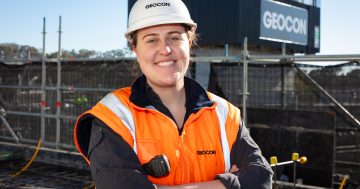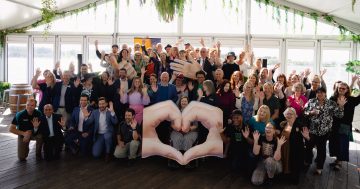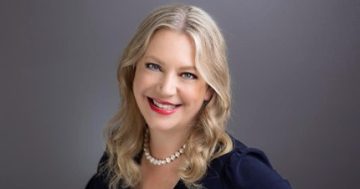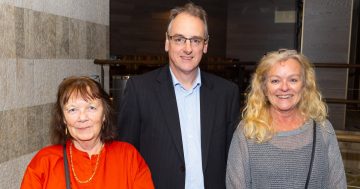
Creating a diverse and inclusive workplace starts by making it a priority.
Having recently celebrated both International Women’s Day and Harmony Day, the importance of diversity, inclusion, participation and engagement has been at the forefront of most peoples’ minds of late. While the immense value of embracing a diverse and inclusive society is evident, often the most difficult aspect is knowing how to put the ideology into practice in our own workplaces.
Quite often the best way to generate fresh ideas is to look at what others are doing, so I caught up with Jonathon Colbran, Partner and member of RSM’s National Diversity Task Force at RSM in Canberra, who gave me a run-down on some of the initiatives they’re working on. Here’s what I found out…
Making it a priority
Any good diversity and inclusion strategy starts by understanding why you need one, then making it a priority.
At RSM, the need for a solid diversity and inclusion strategy was evident when they recognised that while they had a diverse practice as a whole, this wasn’t reflected at all levels of the organisation. Gender diversity was a prime example—while they had a relatively even 50/50 gender balance across the organisation, this wasn’t the case at the more senior levels with the number of male partners far outweighing the number of female partners.
“We know exactly how important diversity is and the wealth of benefits that come from creating an inclusive work environment. There’s so much literature that makes the numerous benefits of embracing diversity abundantly clear, whether it be through better team member engagement, the generation of fresh and innovative ideas or even smarter solutions for your clients,” Jonathon said.
“Because people approach problems from different perspectives, you can ultimately produce a better product or outcome. When you bring together people with different backgrounds, experience and skill sets, you get different points of view which can drive a multitude of benefits for your business.”
“Our clients themselves come from a range of different backgrounds, locations, cultures and age brackets and they all need and want different things. By having a diverse team, we’re better equipped to see and respond to our clients’ needs and nurture those relationships.”
Having identified the need to improve diversity throughout the organisation, about 12 months ago the firm decided to make diversity and inclusion a priority, starting with the establishment of a national organising committee (referred to internally as the National Diversity Task Force) which is responsible for managing their ‘Diversify Strategy’.
The committee not only comprised of both male and female leaders from different cultural backgrounds, but also included very senior team members at the Executive Partner level, including both our most senior female Executive Partner as Chairperson and our National Chairman. “By establishing a committee of this calibre, we were making a very clear statement of just how important diversity is to us and that we want to ‘walk the talk’ at all levels of the organisation,” said Jonathan.
Putting the strategy into practice
The next step was to find ways to put the strategy into practice, which they did by implementing a range of training, policy, leadership and networking initiatives.
They offered unconscious bias training across all senior levels of the organisation, providing staff with expert advice and guidance around how to eliminate bias when approaching problems and making decisions. “The training was designed to highlight the fact that we all have conscious and unconscious biases, and to provide staff with the tools to ensure they eliminate those biases from our decision-making processes,” Jonathan said.
Better communication around the flexible working arrangements that are available to staff. “We rejuvenated our policy and sent out a lot of communication to let our 1000+ strong team know what the policy is and how they can apply for flexible working arrangements. We also developed a series of videos highlighting why those arrangements were beneficial to both team members and the broader organisation.”
“We also made sure our maternity and paternity policies go beyond compliance to meet the needs of our teams, giving young men and women the time off that they need to start a family. In my team in Canberra, many of us (from support staff through to myself personally) have a range of formal and informal flexible working arrangements in place which allow us to do what we need to do in both our personal and professional lives.”
The organisation is also placing focus on their mentorship program. While they’ve had a mentoring program in place for many years, it has its limitations—specifically due to the lack of female mentors available within the organisation.
“For a mentorship program to work, you need to match the right mentors to the right talent and in the case of young female staff members, a male mentor may not necessarily be the right fit for them. To tackle this, we’re looking at ways to source some suitable female mentors externally to come in and support our up-and-coming female staff members to grow into the leaders that they want to be,” Jonathan said.
Finally, they also realised the importance of networking in improving diversity. While they had been running the non-gender-specific RSM Future Leaders’ initiative for several years, nothing existed specifically for women. It was only when a group of young women from within the practice took the initiative to approach the partners with a proposal to establish a womens’ networking group that Women with SASS (Strength, Ambition, Sophistication and Smarts) was formed.
The thought-leadership networking group which has now been running for more than two years, provides female staff the opportunity to build relationships with other like-minded women throughout the Canberra region through events, luncheons or presentations.
“The best part is that it’s a ground-up initiative that is entirely driven and managed by the women in our office which has been a great success in Canberra. In fact, it’s been so successful that we’re considering if it’s an initiative that we can also roll out nationally to benefit more women in our offices around the country,” Jonathan said.
Onwards and upwards
Ultimately, a truly diverse and inclusive workplace starts by taking the first step—making it a key priority. If businesses don’t make it a priority at the highest levels, it’s going to be a very difficult journey to actively drive improvements in this area.
“Having been with the organisation for more than 15 years, I’ve witnessed first-hand that when the firm makes anything a key priority and it’s coupled with some good local initiatives, it’s invariably successful and beneficial for our people, our clients and the organisation as a whole,” Jonathon said.
“While we know we’ve got a bit of a way to go, it’s great to already be seeing so many positive results.”
For more practical tips on how to secure female talent in your organisation now and into the future, read RSM’s article titled ‘5 ways professional services firms can stopple a leaking pipeline of female talent’.
Jonathan Colbran is a Partner of the Restructuring and Recovery Division at RSM in Canberra.
This is a sponsored article, though all opinions are the author’s own. For more information on paid content, see our sponsored content policy.





















